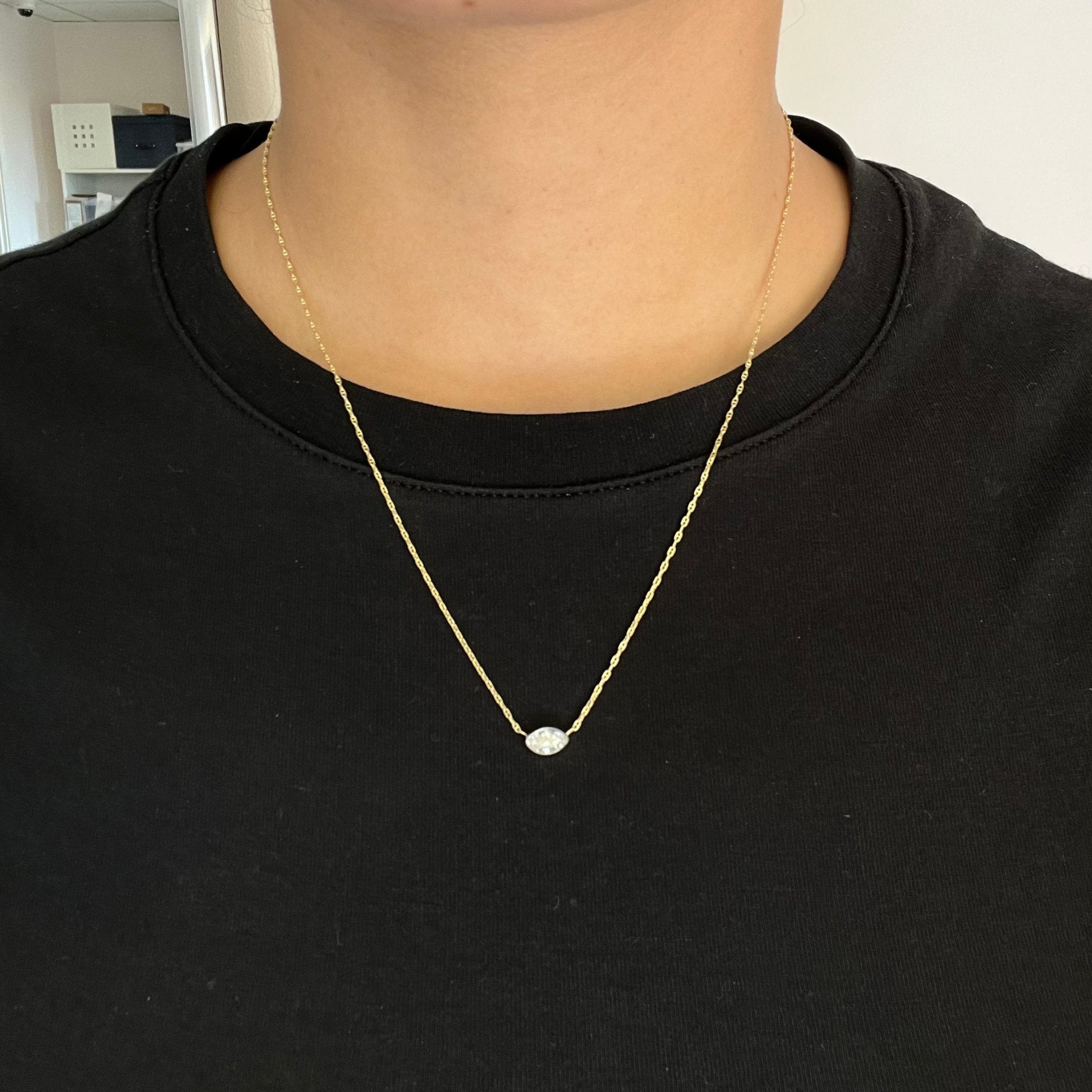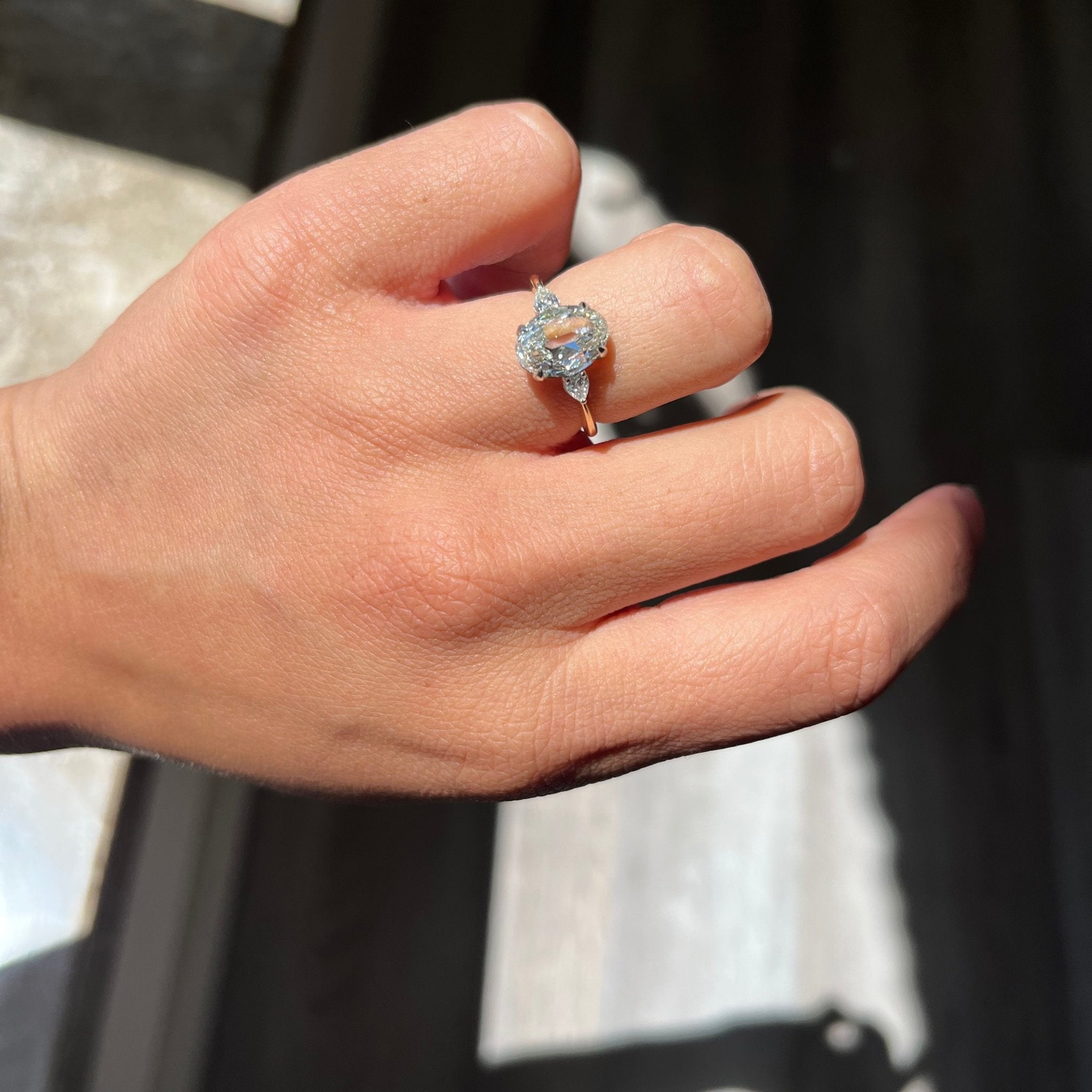The Unique Charm of Moval and Roval Cut Diamonds
Webster’s Dictionary defines compromise as “something intermediate between or blending qualities of two different things”, but that doesn’t exactly feel eloquent enough to describe unique shaped diamonds like movals or rovals.
It’s a beautiful thing when two become one and movals are a great example. Moval diamonds lay somewhere between a marquise and an oval. They are more elongated than your traditional oval cut, but don’t have defined points at the ends like a marquise. They posses the narrowing out like a marquise, but with softer rounded corners like an oval. A slight blending of the two to make something just subtly different enough to shine on its own.
Similarly, rovals are a combination of round cuts and ovals. At first glance, they might seem like a classic round brilliant, but under inspection, you’ll find their ratios aren’t quite symmetrical. Think a round that is a little more squat than usual. The difference is so minor, it doesn’t go into “oval” territory, but it is certainly there so it wouldn’t feel quite right calling it a true round. While these aren’t too common today, a lot of the antique cuts we see that are “round” could easily fall into this category, making them truly one of a kind.
While not an industry standard, we think there is a place for moval and roval diamonds. The beauty is in the difference.
Favorite Moval/Roval Cuts in Our Collection
-
.54ct Moval Cut Diamond Bezel Pendant


.54ct Moval Cut Diamond Bezel Pendant
- Regular price
- $2,650.00 USD
- Sale price
- $2,650.00 USD
- Regular price
-
-
4.75ct Moval Cut Diamond Solitaire, GIA L SI2


4.75ct Moval Cut Diamond Solitaire, GIA L SI2
- Regular price
- $48,000.00 USD
- Sale price
- $48,000.00 USD
- Regular price
-
-
2.17ctw Moval Cut Diamond Ring, GIA K VVS2


2.17ctw Moval Cut Diamond Ring, GIA K VVS2
- Regular price
- $19,000.00 USD
- Sale price
- $19,000.00 USD
- Regular price
-
-
2.01ct Moval Cut Diamond Half-Bezel Solitaire


2.01ct Moval Cut Diamond Half-Bezel Solitaire
- Regular price
- $32,950.00 USD
- Sale price
- $32,950.00 USD
- Regular price
-
-
1.80ct Moval Cut Diamond Bezel Solitaire, GIA I VS1


1.80ct Moval Cut Diamond Bezel Solitaire, GIA I VS1
- Regular price
- $17,950.00 USD
- Sale price
- $17,950.00 USD
- Regular price
-
-
1.69ct Antique Moval Cut Diamond Solitaire, GIA E VVS1


1.69ct Antique Moval Cut Diamond Solitaire, GIA E VVS1
- Regular price
- $22,500.00 USD
- Sale price
- $22,500.00 USD
- Regular price
-
-
1.69ct Moval Cut Diamond, GIA E VVS1


1.69ct Moval Cut Diamond, GIA E VVS1
- Regular price
- $21,750.00 USD
- Sale price
- $21,750.00 USD
- Regular price
-
















